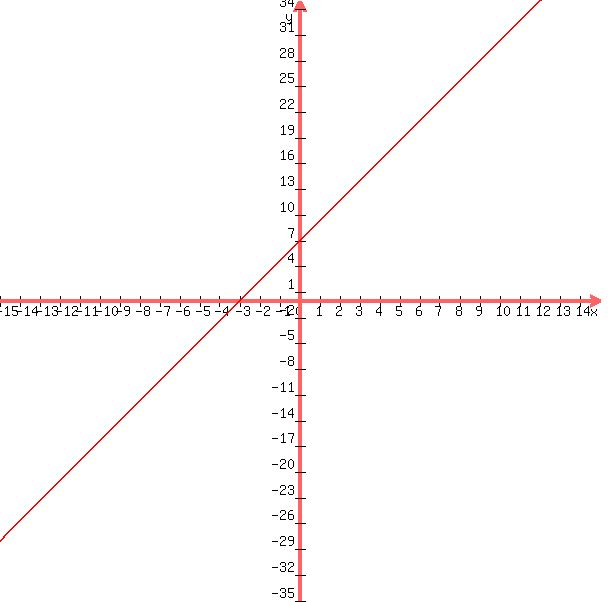|
Question 235094: Any time I have a problem dealing with fractions I freak out a little.
Graph the equation using the slope and the y-intercept, I believe the slope is the 7/3, but then I do not know what to do after that
y= 7/3x + 7
Answer by Theo(13342)   (Show Source): (Show Source):
You can put this solution on YOUR website! Are you supposed to draw the graph?
The slope is (7/3)
That means that for every change of 3 in x, you get a change of 7 in y.
7 is the y-intercept.
The slope-intercept form of the equation of a straight line is y = mx + b
In your equation, m = (7/3) and b = 7
To graph, just plot some points.
Pick multiples of 3 for x to make the math go easier.
When x = 0, y = 7/3 * 0 + 7 which makes it equal 7.
When x = 3, y = 7/3 * 3 + 7 which makes it equal to 7 + 7 = 14
When x = 6, y = 7/3 * 6 + 7 which makes it equal to 14 + 7 = 21
Plot the points:
(x,y)
(0,7)
(3,14)
(6,21)
and you have your straight line graphed.
The graph would look like:

A picture of the graph showing the intersection points can be found here !!!!!
The picture shows that when:
x = 0, (7/3)*0 + 7 = 0 + 7 = 7
x = 3, (7/3)*3 + 7 = 7 + 7 = 14
x = 6, (7/3)*6 + 7 = 14 + 7 = 21
|
|
|
| |